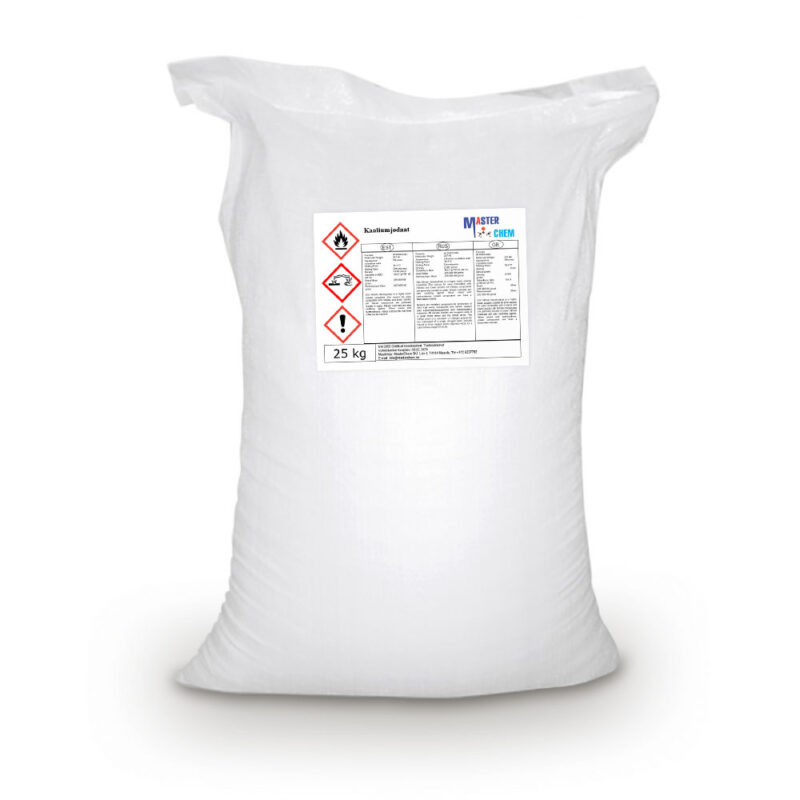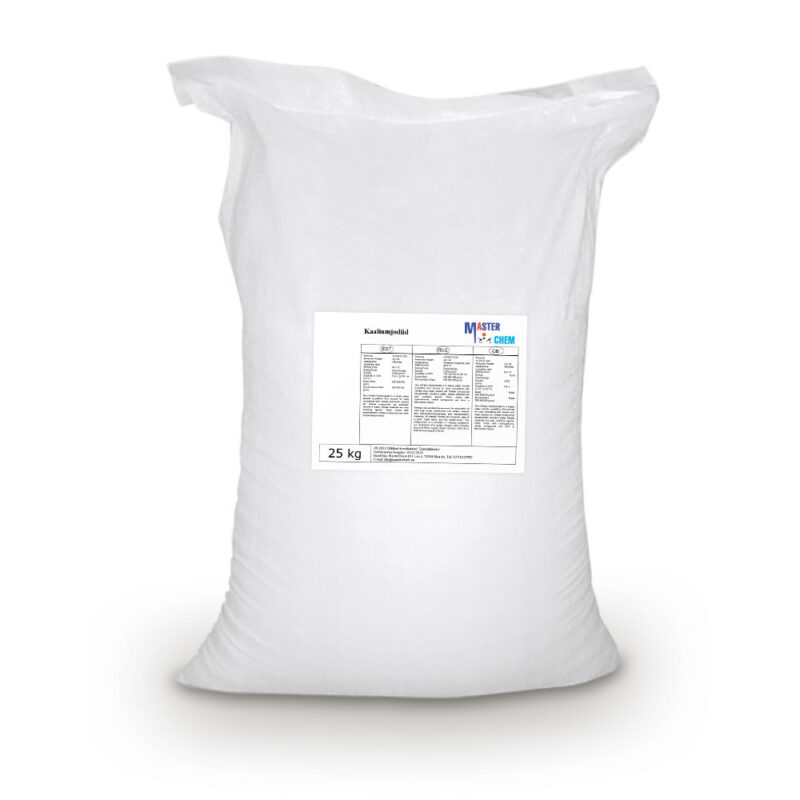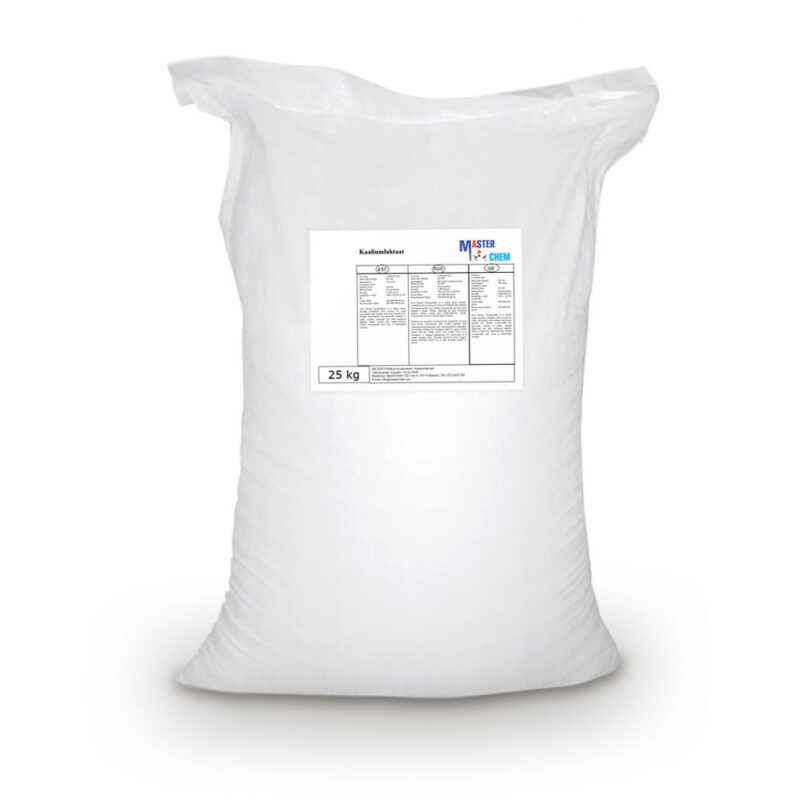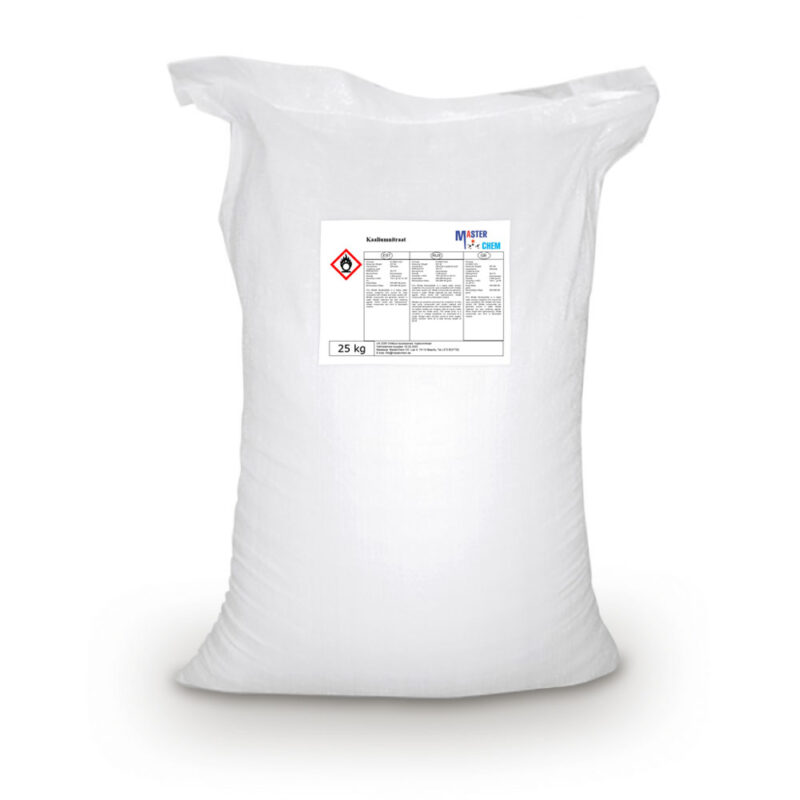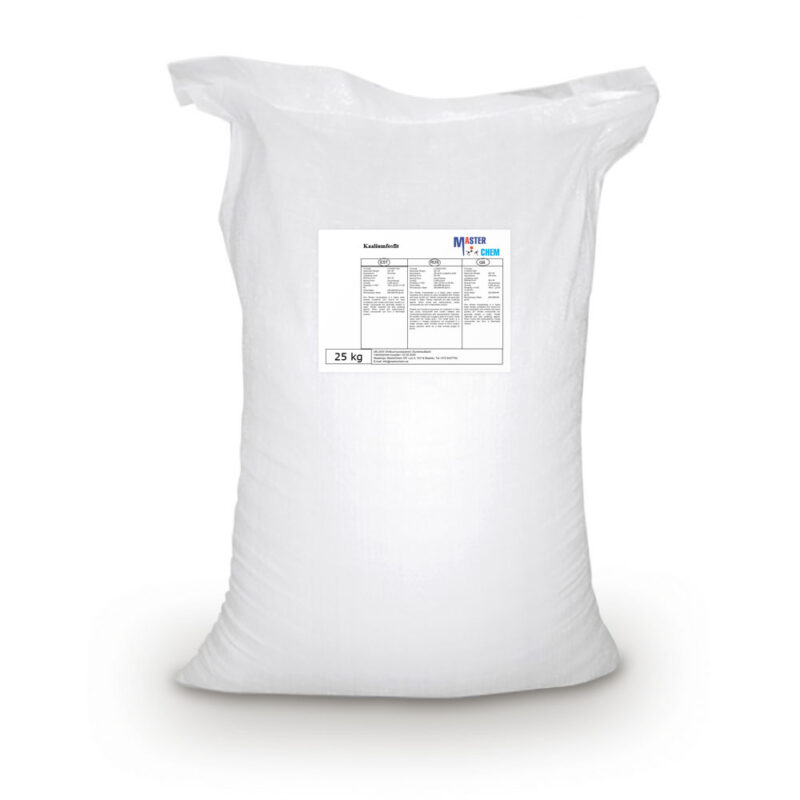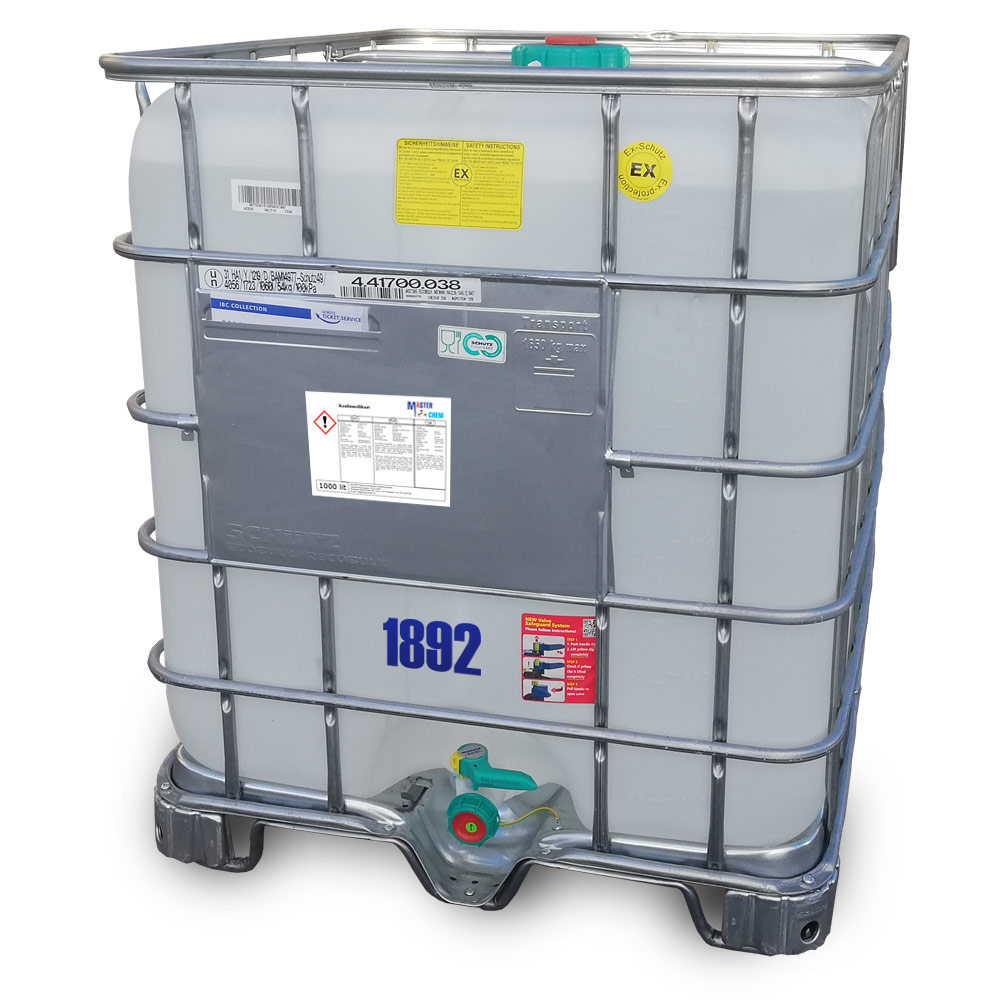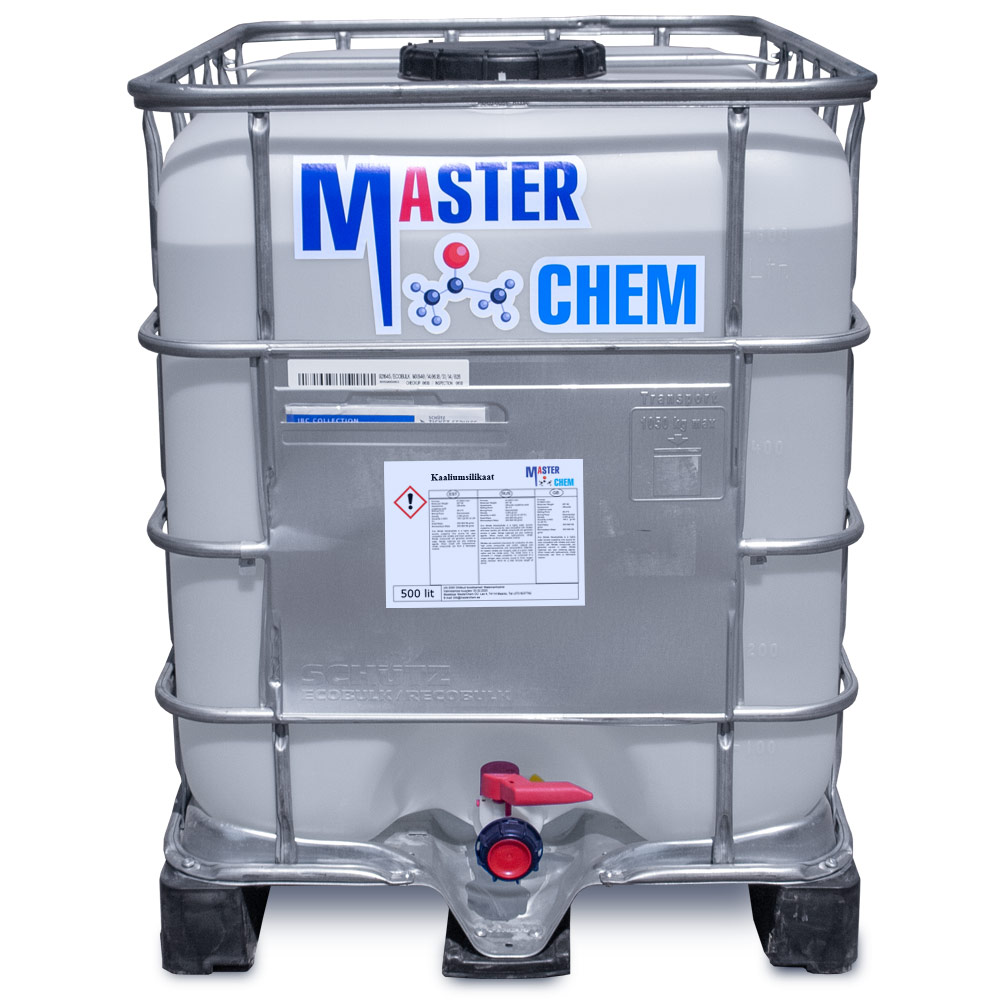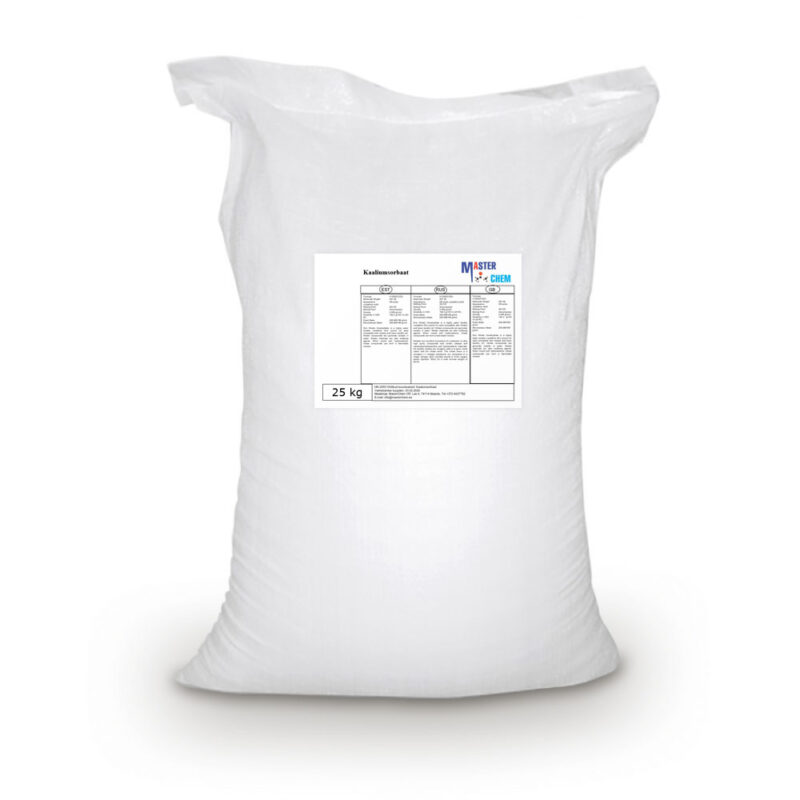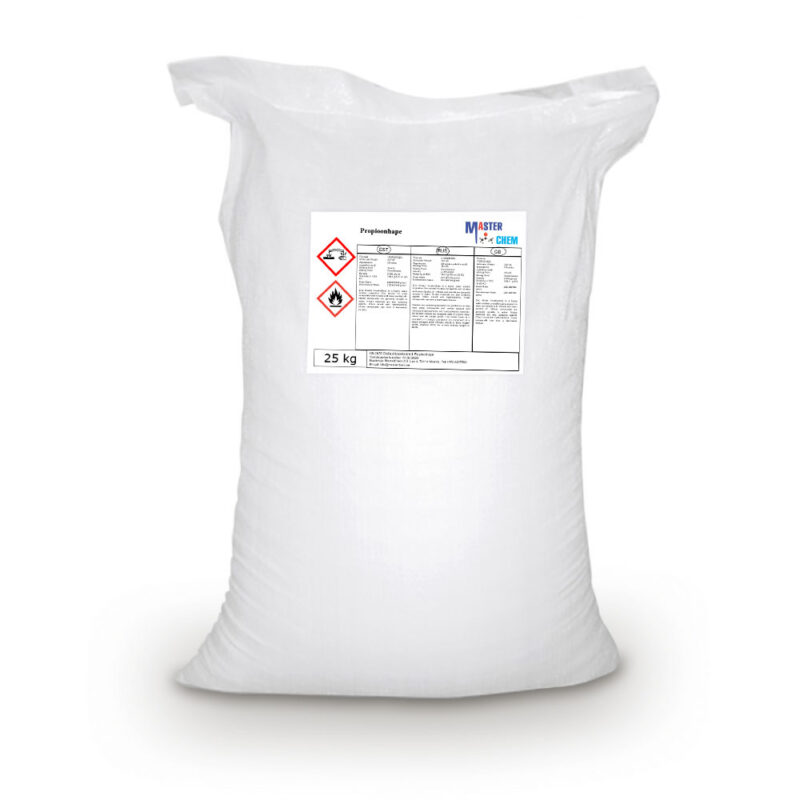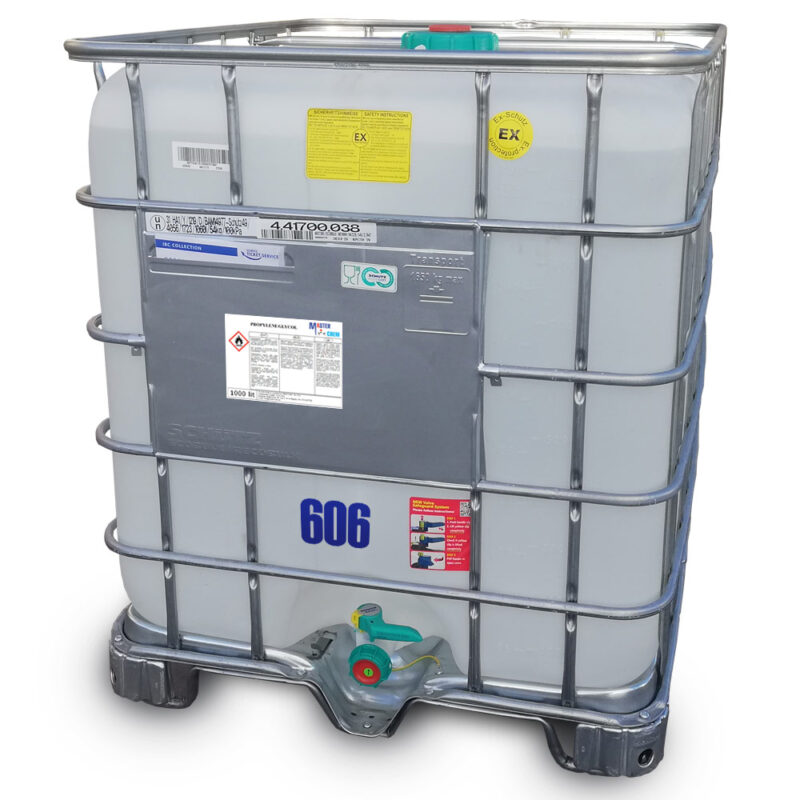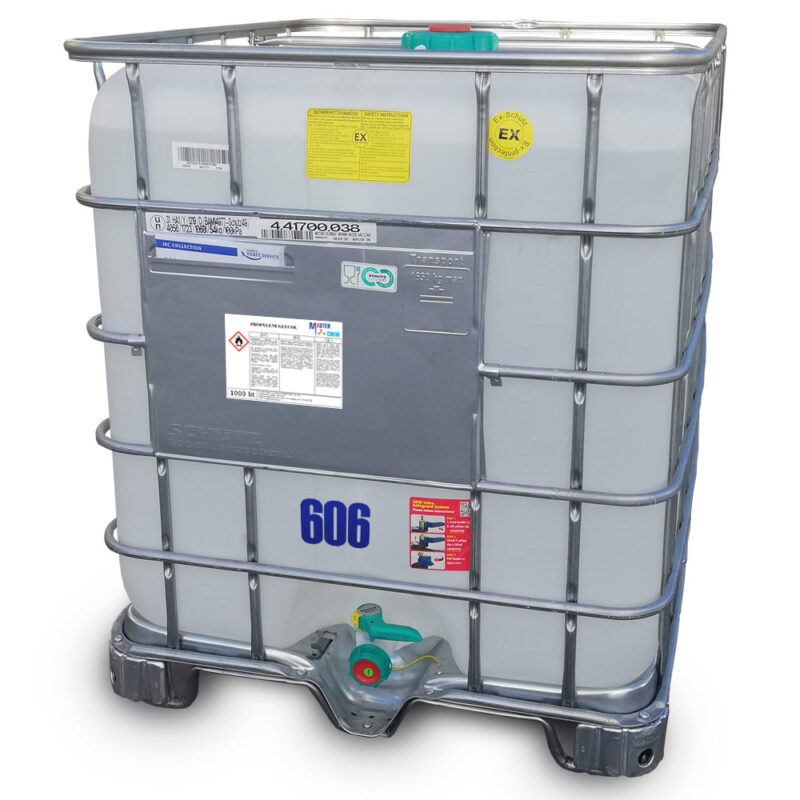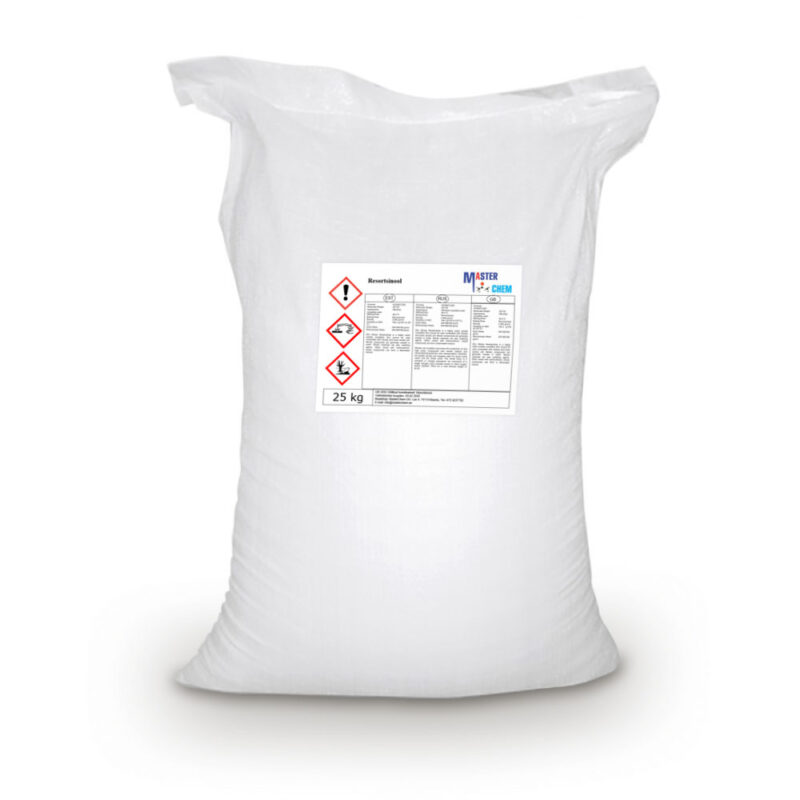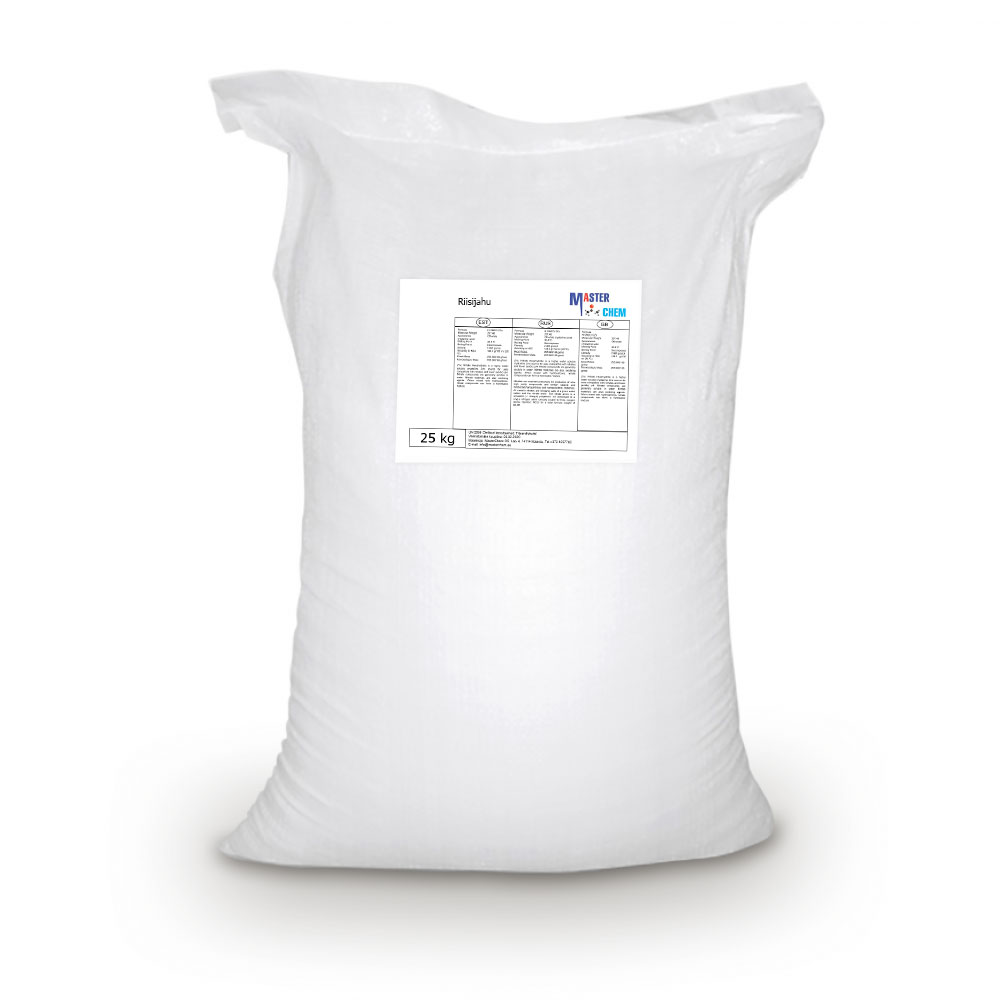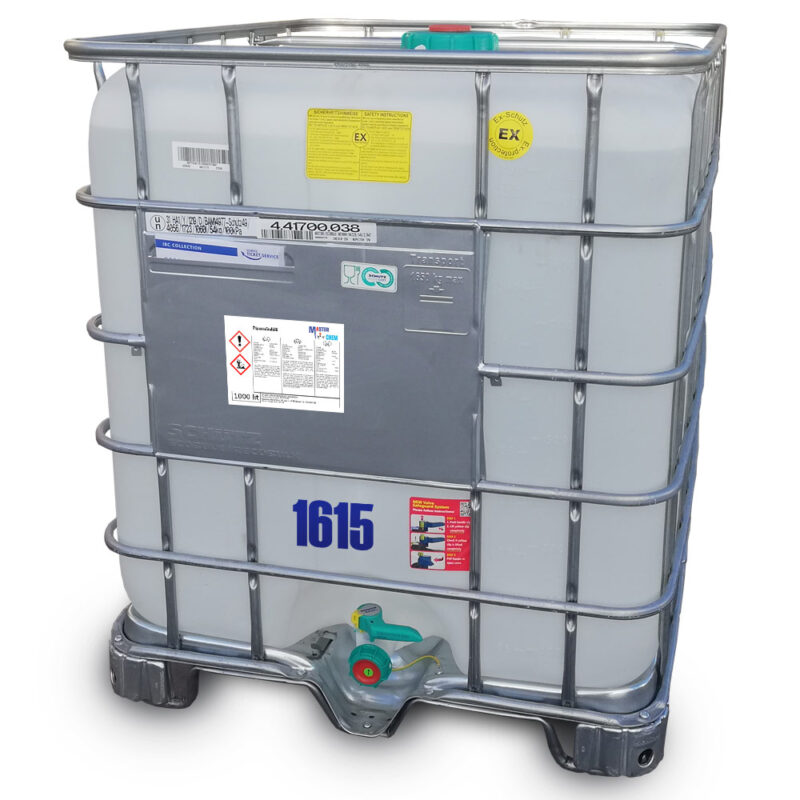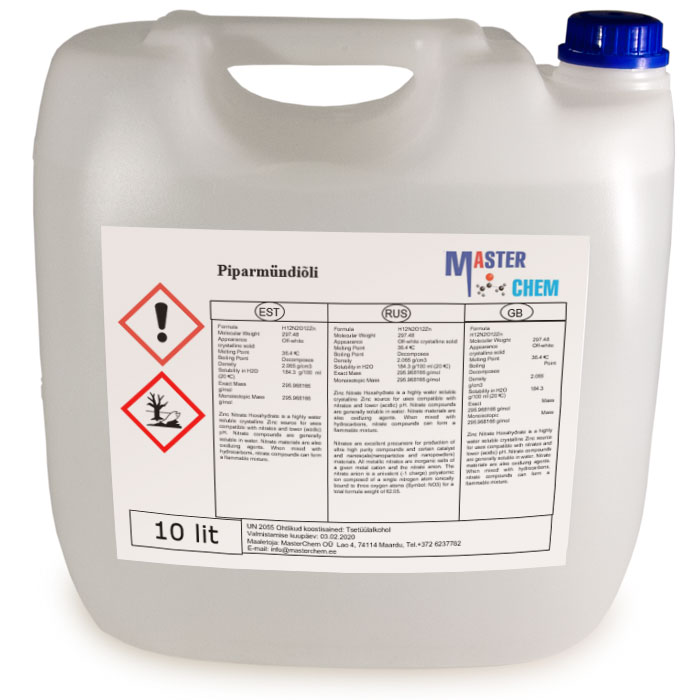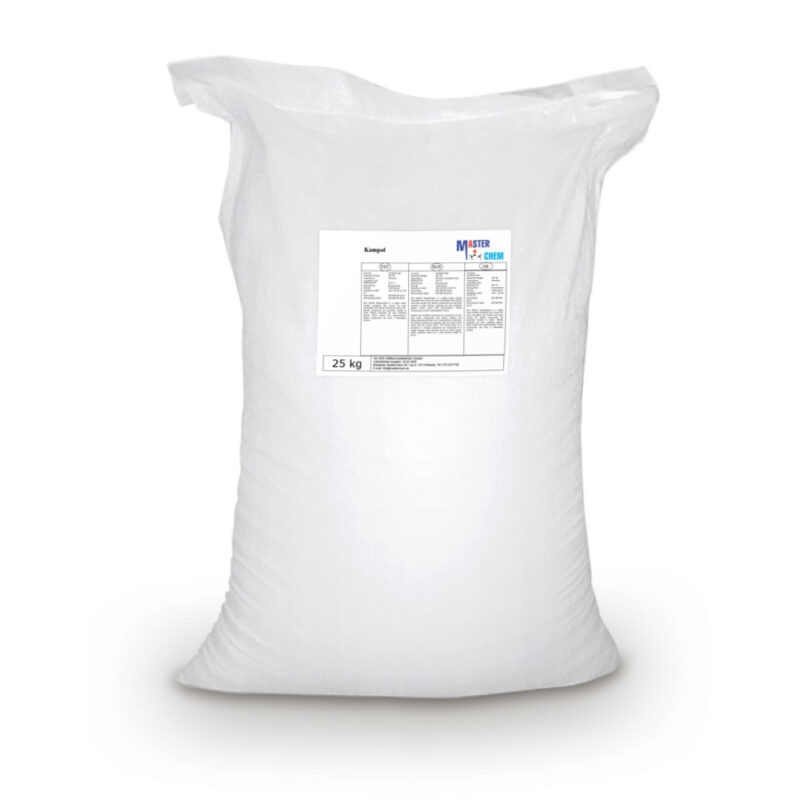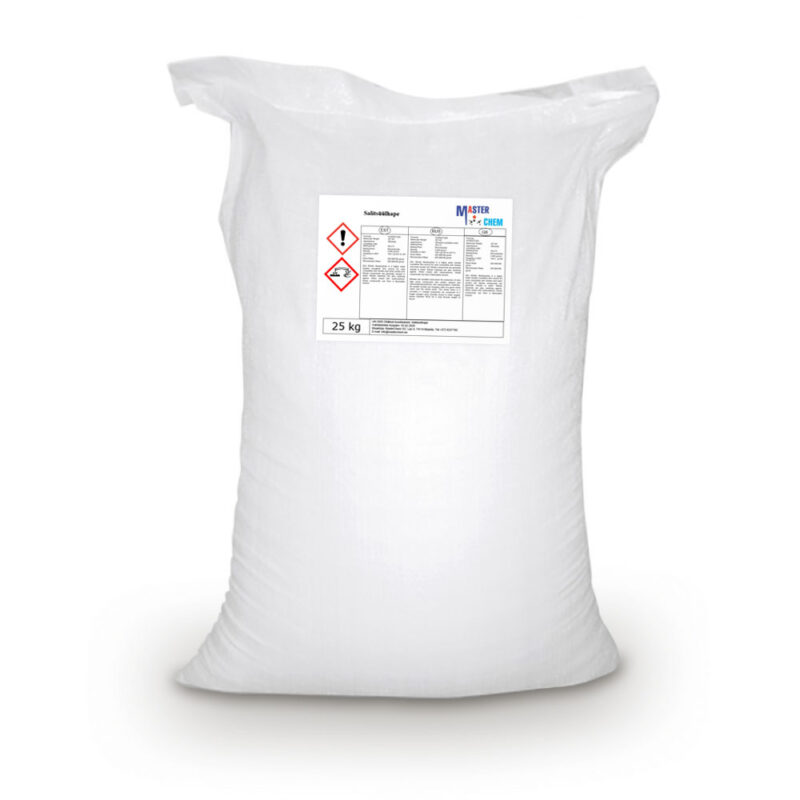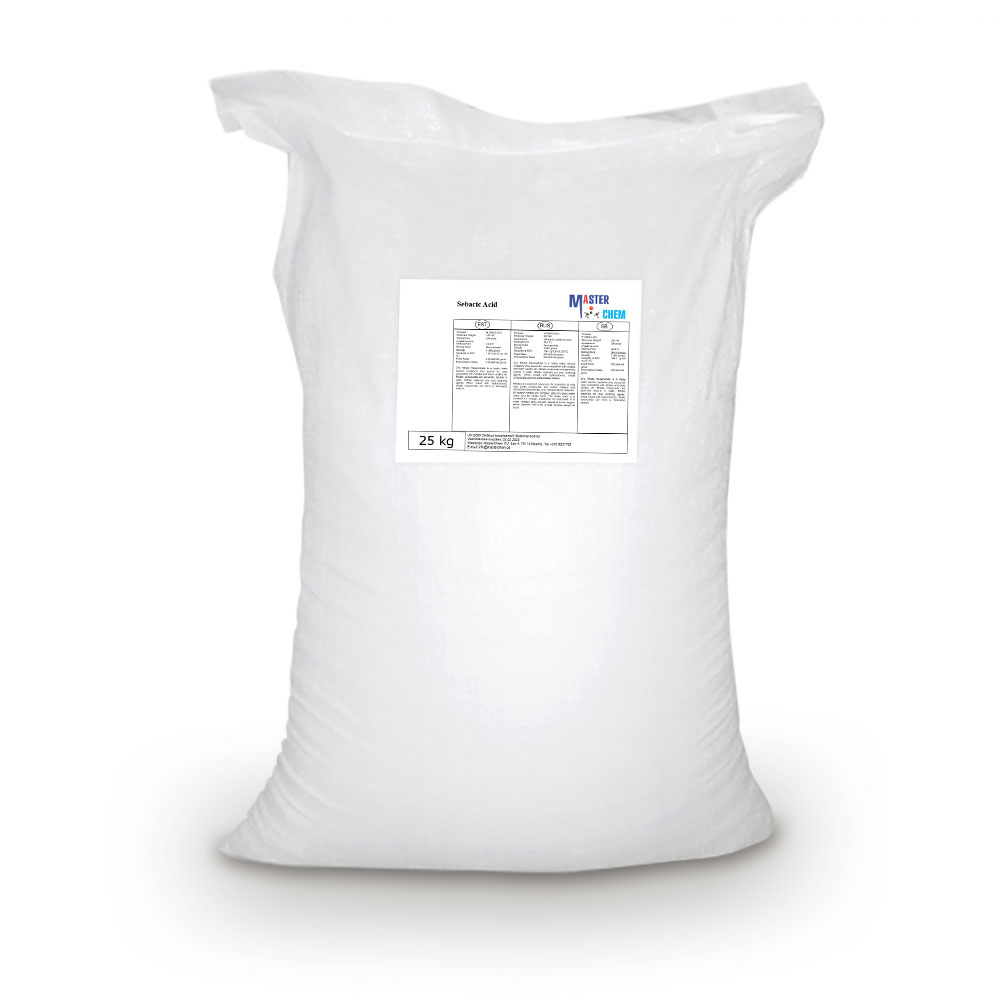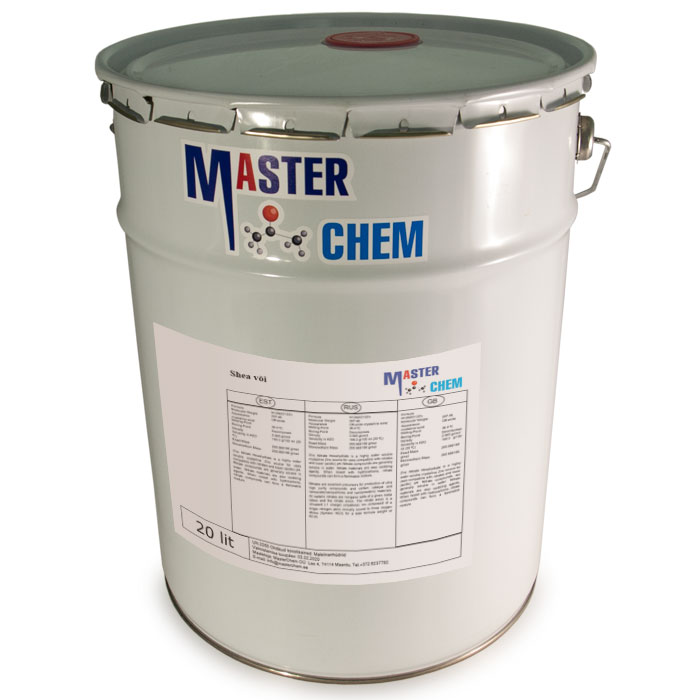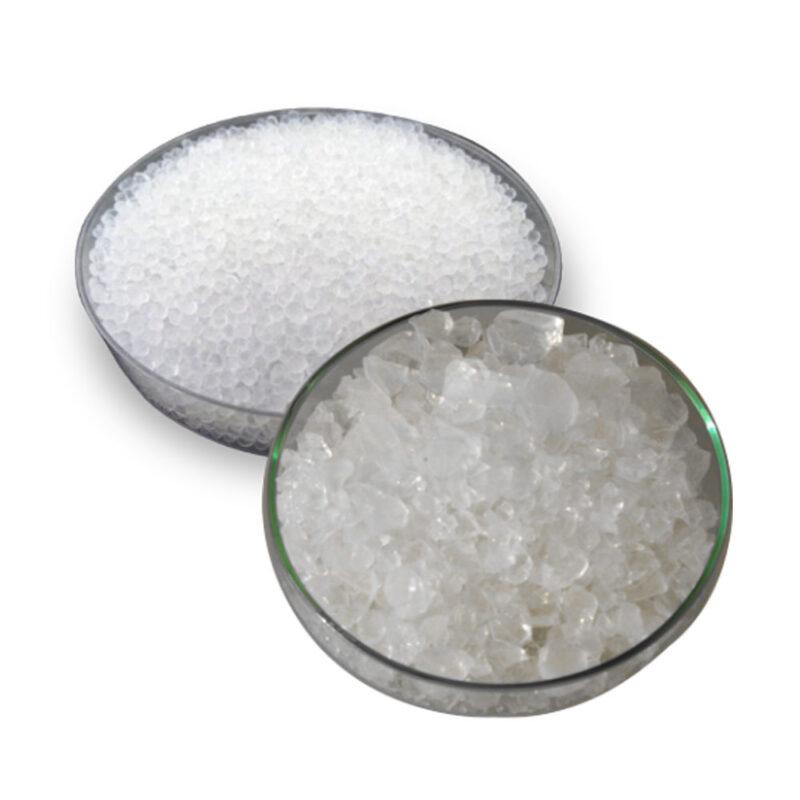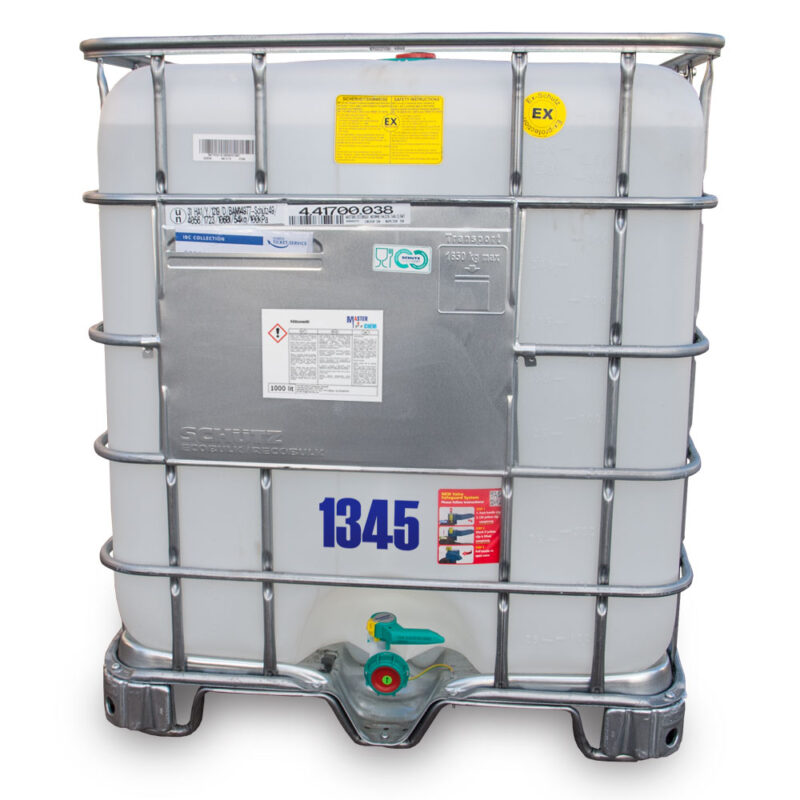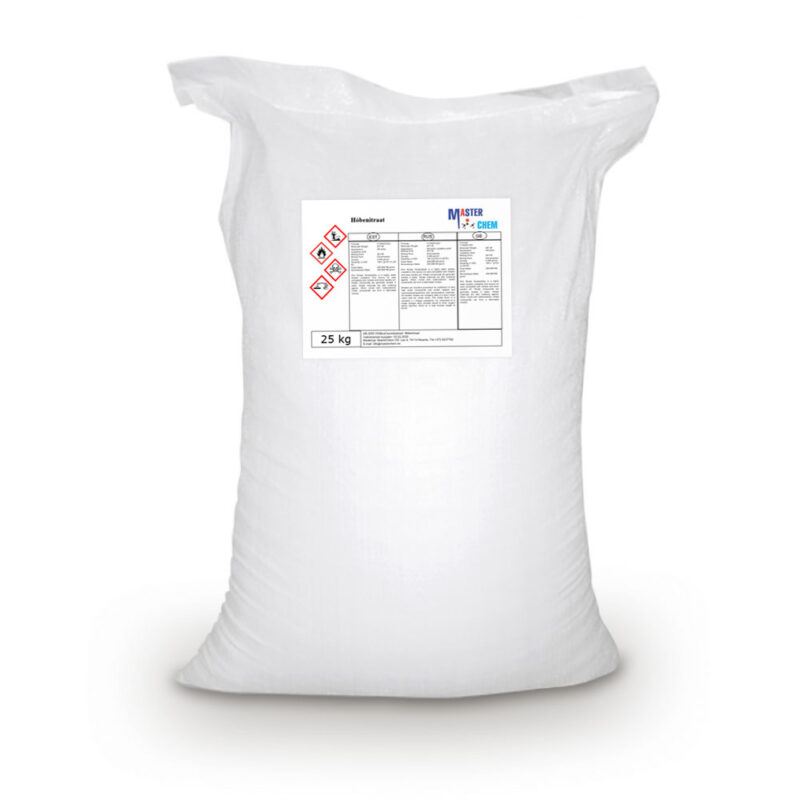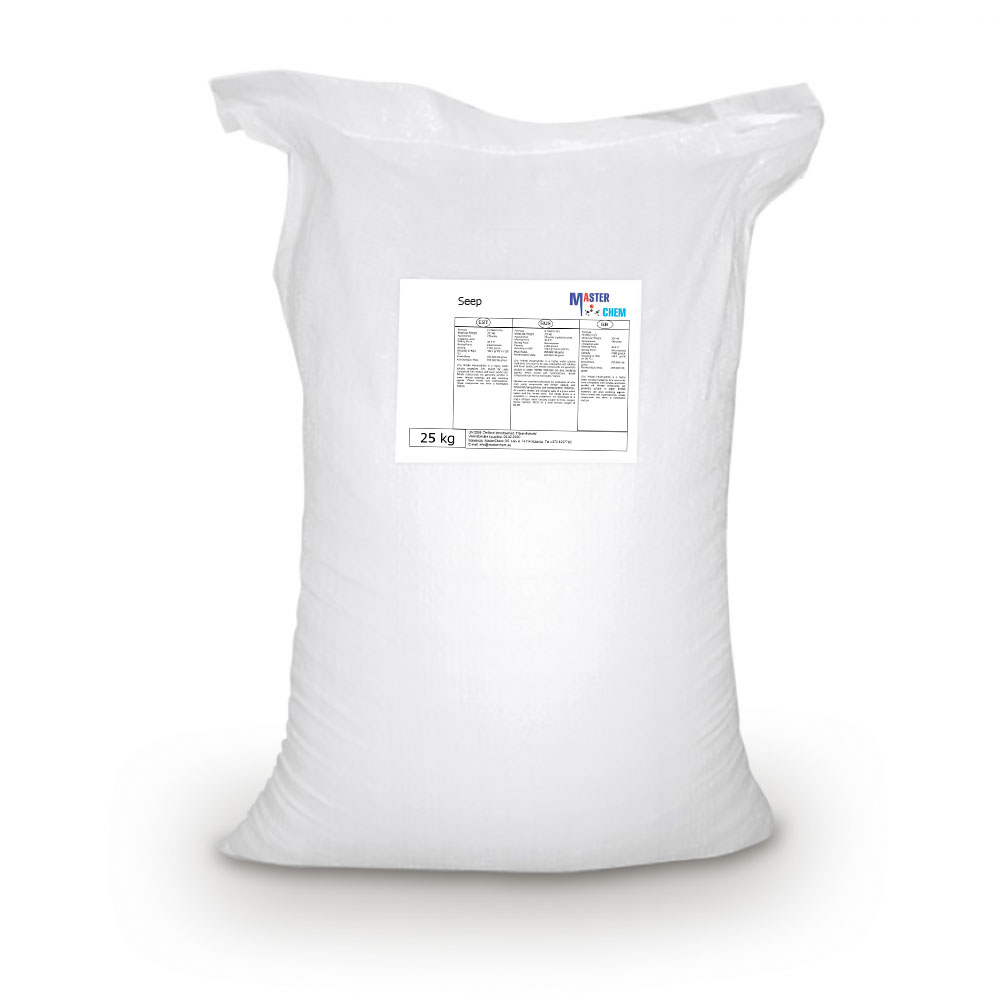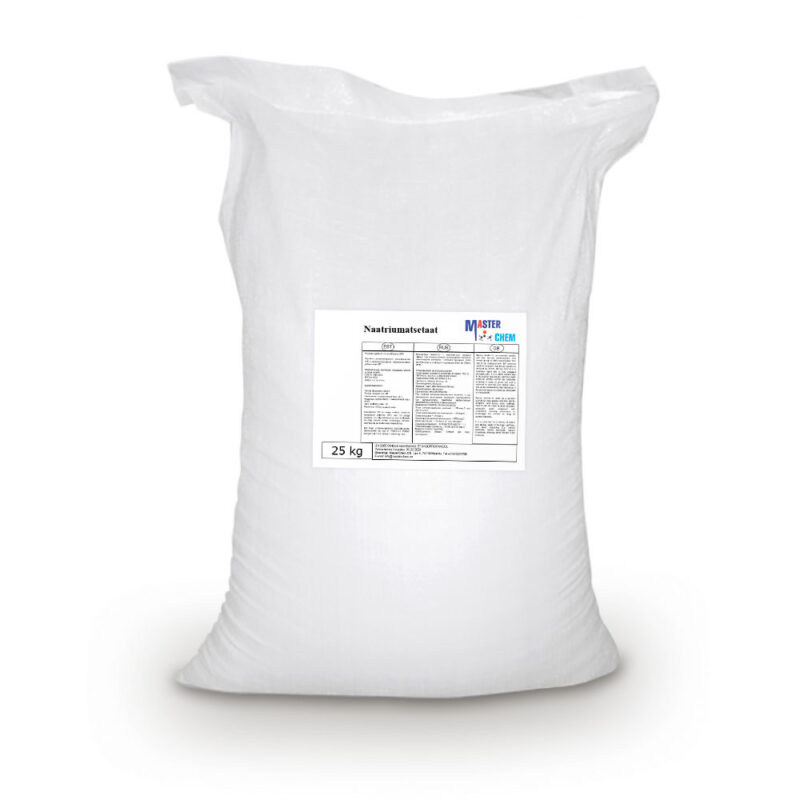Potassium Iodate (CAS 7758-05-6)
Potassium Iodate (CAS 7758-05-6)
Potassium iodate (KIO3) is an ionic chemical compound consisting of K+ ions and IO3− ions in a 1:1 ratio.
Potassium iodate is sometimes used for iodination of table salt to prevent iodine deficiency. Because iodide can be oxidized to iodine by molecular oxygen under wet conditions, US companies add thiosulfates or other antioxidants to the potassium iodide. In other countries, potassium iodate is used as a source for dietary iodine. It is also an ingredient in some baby formula milk.
Like potassium bromate, potassium iodate is occasionally used as a maturing agent in baking.
Potassium Iodide (CAS 7681-11-0)
Potassium Iodide (CAS 7681-11-0)
Potassium iodide is a chemical compound, medication, and dietary supplement. As a medication it is used to treat hyperthyroidism, in radiation emergencies, and to protect the thyroid gland when certain types of radiopharmaceuticals are used. In the developing world it is also used to treat skin sporotrichosis and phycomycosis. As a supplement it is used in those who have low intake of iodine in the diet. It is given by mouth.
Common side effects include vomiting, diarrhea, abdominal pain, rash, and swelling of the salivary glands. Other side effects include allergic reactions, headache, goitre, and depression. While use during pregnancy may harm the baby, its use is still recommended in radiation emergencies. Potassium iodide has the chemical formula KI. Commercially it is made by mixing potassium hydroxide with iodine.
Potassium iodide has been used medically since at least 1820. It is on the World Health Organization’s List of Essential Medicines. Potassium iodide is available as a generic medication and over the counter. Potassium iodide is also used for the iodization of salt.
Potassium lactate (CAS 85895-78-9)
Potassium lactate (CAS 85895-78-9) 25kg MasterChem
Potassium L(+)-lactate is the potassium salt of L(+)-lactic acid, obtained by neutralisation of the acid of natural origin with a high purity potassium source. Lactate is produced naturally by living organisms as a by-product of the glycolysis. Potassium L(+)-lactate is used in food as a sodium free pathogen control agent and humectant. As an alternative to sodium lactate, it addresses the concerns of health organisations and consumers about reducing sodium intake.
Potassium nitrate (CAS 7757-79-1)
Potassium nitrate (CAS 7757-79-1)
Potassium nitrate (CAS 7757-79-1)
Potassium nitrate is a chemical compound with the chemical formula KNO3. It is an ionic salt of potassium ions K+ and nitrate ions NO3−, and is therefore an alkali metal nitrate. It occurs in nature as a mineral, niter (or nitre in the UK). It is a source of nitrogen, and nitrogen was named after niter. Potassium nitrate is one of several nitrogen-containing compounds collectively referred to as saltpetre (or saltpeter in North America).
Major uses of potassium nitrate are in fertilizers, tree stump removal, rocket propellants and fireworks. It is one of the major constituents of gunpowder (black powder). In processed meats, potassium nitrate reacts with hemoglobin and myoglobin generating a blue color.
Potassium Phosphite (CAS 13977-65-6)
Potassium Phosphite (CAS 13977-65-6)
Monopotassium phosphite is an inorganic compound with the formula KH2PO3. A compositionally related compound has the formula H3PO3.2(KH2PO3). Both are white solids that consist of salts of the phosphite anion H2PO3−, the conjugate base of phosphorous acid.
Phosphites of potassium are used as fungicides (in a loose sense) in agriculture to combat water mold infection. Confusingly, they have also been marketed as fertilizers to avoid a regulatory burden. While perfectly capable to supply potassium to the plant, the phorphorus in phosphite form is unavailable to plants, and may even inhibit the uptake of the normal phosphate form if used in excess.
Potassium silicate (CAS 1312-76-1)
Potassium silicate (CAS 1312-76-1)
Potassium silicate is the name for a family of inorganic compounds. The most common potassium silicate has the formula K2SiO3, samples of which contain varying amounts of water. These are white solids or colorless solutions.
Some metal cleaning formulations use potassium silicate, which also serves as a corrosion inhibitor. It also finds various uses in the fabrication of welding rods or even of cosmetics.
Potassium sorbate (CAS 24634-61-5)
Potassium sorbate (CAS 24634-61-5)
Potassium sorbate is the potassium salt of sorbic acid, chemical formula CH3CH=CH−CH=CH−CO2K. It is a white salt that is very soluble in water (58.2% at 20 °C). It is primarily used as a food preservative (E number 202). Potassium sorbate is effective in a variety of applications including food, wine, and personal-care products. While sorbic acid occurs naturally in some berries, virtually all of the world’s supply of sorbic acid, from which potassium sorbate is derived, is manufactured synthetically.
Potassium sulphate (CAS 7778-80-5)
Potassium sulphate (CAS 7778-80-5)
Potassium sulfate (US) or potassium sulphate (UK), also called sulphate of potash (SOP), arcanite, or archaically potash of sulfur, is the inorganic compound with formula K2SO4, a white water-soluble solid. It is commonly used in fertilizers, providing both potassium and sulfur.
The dominant use of potassium sulfate is as a fertilizer. K2SO4 does not contain chloride, which can be harmful to some crops. Potassium sulfate is preferred for these crops, which include tobacco and some fruits and vegetables. Crops that are less sensitive may still require potassium sulfate for optimal growth if the soil accumulates chloride from irrigation water.
The crude salt is also used occasionally in the manufacture of glass. Potassium sulfate is also used as a flash reducer in artillery propellant charges. It reduces muzzle flash, flareback and blast overpressure. It is sometimes used as an alternative blast media similar to soda in soda blasting as it is harder and similarly water-soluble. Potassium sulfate can also be used in pyrotechnics in combination with potassium nitrate to generate a purple flame.
Propionic acid (CAS 79-09-4)
Propionic acid (CAS 79-09-4)
Propionic acid (/proʊpiˈɒnɪk/, from the Greek words protos, meaning “first”, and pion, meaning “fat”; also known as propanoic acid) is a naturally occurring carboxylic acid with chemical formula CH3CH2CO2H. It is a liquid with a pungent and unpleasant smell somewhat resembling body odor. The anion CH3CH2CO2− as well as the salts and esters of propionic acid are known as propionates or propanoates.
Propylene glycol (CAS 57-55-6)
Other names: α-Propylene glycol, 1,2-Propanediol, 1,2-Dihydroxypropane, Methyl ethyl glycol (MEG), Methylethylene glycol
Propylene glycol (IUPAC name: propane-1,2-diol) is a synthetic organic compound with the chemical formula C3H8O2. It is a viscous colorless liquid which is nearly odorless but possesses a faintly sweet taste. Chemically it is classed as a diol and is miscible with a broad range of solvents, including water, acetone, and chloroform.
CAS: 57-55-6
Propylene glycol monoethyl ether (CAS 52125-53-8)
Other names: PGME , 1-Methoxy-2-propanol, Methoxypropanol, α-Propylene glycol monomethyl ether, Dowanol PM
Propylene glycol methyl ether (PGME or 1-methoxy-2-propanol) is an organic solvent with a wide variety of industrial and commercial uses. Similar to other glycol ethers, it is used as a carrier/solvent in printing/writing inks. It also finds use as an in industrial and commercial paint stripper.
CAS: 52125-53-8
Resorcinol (CAS 108-46-3)
Resorcinol (CAS 108-46-3)
Resorcinol (or resorcin) is an organic compound with the formula C6H4(OH)2. It is one of three isomeric benzenediols, the 1,3-isomer (or meta-isomer). It is a white, water-soluble solid.
Resorcinol crystallizes from benzene as colorless needles that are readily soluble in water, alcohol, and ether, but insoluble in chloroform and carbon disulfide.
Resorcinol is mainly used in the production of resins. As a mixture with phenol, it condenses with formaldehyde to afford adhesives.
Rice meal
Rice meal
Rice flour consists of polished rice bran and some rice flour. It is a byproduct of rice milling, which means the process of removing the husk and bran layer. It produces an edible by-product that does not contain impurities.
Rosemary oil
Rosemary oil
Rosemary oil is a popular infusion oil used in cooking and beauty treatments. Rosmarinus officinalis is an evergreen shrub with needle-like leaves and a woody aroma. Naturalin owns a rosemary plant stock with an entire process control system from raw materials to product processing, which ensured the quality of the rosemary series products.
Functions:
1. Natural preservative;
2. Antioxidant, removes free radicals, anti-aging;
3. Improving brain function and memory;
4. Stimulation of hair growth;
5. Releasing stress and increasing blood circulation.
Applications:
1. In personal hygiene products: rosemary oil stimulates blood circulation in the scalp area, sterilizes and prevents itching. It is widely used in hair care products;
2. In the food industry: highly effective antioxidant; antibacterial; natural preservative;
3. Customized: it can be modified according to the customer’s special needs.
Rosin (CAS 8050-09-7)
Rosin (CAS 8050-09-7)
Rosin, also called colophony or Greek pitch (Latin: pix graeca), is a solid form of resin obtained from pines and some other plants, mostly conifers, produced by heating fresh liquid resin to vaporize the volatile liquid terpene components. It is semi-transparent and varies in color from yellow to black. At room temperature rosin is brittle, but it melts at stove-top temperature. It chiefly consists of various resin acids, especially abietic acid. The term “colophony” comes from colophonia resina, Latin for “resin from Colophon”, an ancient Ionic city.
Salicylic acid (CAS 69-72-7)
Salicylic acid (CAS 69-72-7)
Salicylic acid is an organic compound with the formula HOC6H4CO2H. A colorless solid, it is a precursor to and a metabolite of aspirin (acetylsalicylic acid). It is a plant hormone. The name is from Latin salix for willow tree. It is an ingredient in some anti-acne products. Salts and esters of salicylic acid are known as salicylates.
Salicylic acid is used in the production of other pharmaceuticals, including 4-aminosalicylic acid, sandulpiride, and landetimide (via salethamide).
Salicylic acid has long been a key starting material for making acetylsalicylic acid (aspirin). Aspirin (acetylsalicylic acid or ASA) is prepared by the esterification of the phenolic hydroxyl group of salicylic acid with the acetyl group from acetic anhydride or acetyl chloride.
Sebacic Acid (CAS 111-20-6)
Sebacic Acid (CAS 111-20-6)
Sebacic acid is a castor oil-derived dicarboxylic acid. It is widely used to produce polymers, plasticizers, lubricants, and corrosion retardants. It can act as a pH corrector in the cosmetic products formulations. Sebacic acid is also used as a precursor to prepare sebacate esters such as diisopropyl sebacate, diethylhexyl sebacate, and dibutyl sebacate.
Shea butter (CAS 67701-30-8)
Shea butter (CAS 67701-30-8)
Shea butter is a fat (triglyceride; mainly oleic acid and stearic acid) extracted from the nut of the African shea tree (Vitellaria paradoxa). It is ivory in color when raw and commonly dyed yellow with borututu root or palm oil. It is widely used in cosmetics as a moisturizer, salve or lotion.
hea butter is composed of five principal fatty acids: palmitic, stearic, oleic, linoleic, and arachidic (see Table below). About 85 to 90% of the fatty acid composition is stearic and oleic acids. The relative proportion of these two fatty acids affects shea butter consistency. The stearic acid gives it a solid consistency, while the oleic acid influences how soft or hard the shea butter is, depending on ambient temperature.
Silica gel (CAS 7631-86-9)
Silica gel (CAS 7631-86-9)
Silica gel is a granular, vitreous, porous form of silicon dioxide made synthetically from sodium silicate. Silica gel contains a nano-porous silica micro-structure, suspended inside a liquid. Most applications of silica gel require it to be dried, in which case it is called silica xerogel. For practical purposes, silica gel is often interchangeable with silica xerogel.
CAS: 7631-86-9
Silicone oil (CAS 63148-62-9)
Silicone oil (CAS 63148-62-9)
A silicone oil is any liquid polymerized siloxane with organic side chains. The most important member is polydimethylsiloxane. These polymers are of commercial interest because of their relatively high thermal stability and their lubricating properties.
Silicone oils are primarily used as lubricants, thermic fluid oils or hydraulic fluids. They are excellent electrical insulators and, unlike their carbon analogues, are non-flammable. Their temperature stability and good heat-transfer characteristics make them widely used in laboratories for heating baths (“oil baths”) placed on top of hotplate stirrers, as well as in freeze-dryers as refrigerants. Silicone oil is also commonly used as the working fluid in dashpots, wet-type transformers, diffusion pumps and in oil-filled heaters. Aerospace use includes the external coolant loop and radiators of the International Space Station Zvezda module, which rejects heat in the vacuum of space.
The class of silicone oils known as cyclosiloxanes has many of the same properties as other non-cyclic siloxane liquids but also has a relatively high volatility, making it useful in a number of cosmetic products such as antiperspirant.
Some silicone oils, such as simethicone, are potent anti-foaming agents due to their low surface tension. They are used in industrial applications such as distillation or fermentation, where excessive amounts of foam can be problematic. They are sometimes added to cooking oils to prevent excessive foaming during deep frying. Silicone oils used as lubricants can be inadvertent defoamers (contaminants) in processes where foam is desired, such as in the manufacture of polyurethane foam.
Silicone oil is also one of the two main ingredients in Silly Putty, along with boric acid.
Silver nitrate (CAS 7761-88-8)
Silver nitrate (CAS 7761-88-8)
Silver nitrate is an inorganic compound with chemical formula AgNO3. This salt is a versatile precursor to many other silver compounds, such as those used in photography. It is far less sensitive to light than the halides. It was once called lunar caustic because silver was called luna by ancient alchemists who associated silver with the moon. In solid silver nitrate, the silver ions are three-coordinated in a trigonal planar arrangement.
Soap
Soap
Soap is a salt of a fatty acid used in a variety of cleaning and lubricating products. In a home environment, soaps are surfactants that are commonly used for laundry, bathing and other types of housekeeping. In industrial environments, soaps are used as thickeners, components in some lubricants and precursors to catalysts.
When soap is used for cleaning, it dissolves particles and dirt, which can then be separated from the article to be cleaned. In hand washing, as a surfactant, when lathered with a little water, soap kills microorganisms by disorganizing their membrane lipid bilayers and denaturing their proteins. It also emulsifies oils, allowing them to be carried away by running water.
Sodium acetate (CAS 127-09-3)
Sodium acetate (CAS 127-09-3)
Sodium acetate, NaCH3COO, also abbreviated NaOAc, is the sodium salt of acetic acid. This colorless deliquescent salt has a wide range of uses.
Applications
Biotechnological
Sodium acetate is used as the carbon source for culturing bacteria. Sodium acetate is also useful for increasing yields of DNA isolation by ethanol precipitation.
Industrial
Sodium acetate is used in the textile industry to neutralize sulfuric acid waste streams and also as a photoresist while using aniline dyes. It is also a pickling agent in chrome tanning and helps to impede vulcanization of chloroprene in synthetic rubber production. In processing cotton for disposable cotton pads, sodium acetate is used to eliminate the buildup of static electricity.
Concrete longevity
Sodium acetate is used to mitigate water damage to concrete by acting as a concrete sealant, while also being environmentally benign and cheaper than the commonly used epoxy alternative for sealing concrete against water permeation.
Food
Sodium acetate may be added to food as a seasoning, sometimes in the form of sodium diacetate, a one-to-one complex of sodium acetate and acetic acid, given the E-number E262. It is often used to give potato chips a salt and vinegar flavour, and may be used as a substitute for vinegar itself on potato chips as it doesn’t add moisture to the final product. Sodium acetate (anhydrous) is widely used as a shelf-life extending agent, pH control agent It is safe to eat at low concentration.
Sodium benzoate (CAS 532-32-1)
Sodium benzoate (CAS 532-32-1)
Sodium benzoate is the sodium salt of benzoic acid, widely used as a food preservative and pickling agent. A white crystaline chemical with the formula C6H5COONa, it has an E number of E211. It can be produced by reacting sodium hydroxide with benzoic acid.
Sodium benzoate is produced by the neutralization of benzoic acid, which is itself produced commercially by partial oxidation of toluene with oxygen.
Many foods are natural sources of benzoic acid, its salts (such as sodium benzoate), and its esters. Fruits and vegetables can be rich sources, particularly berries such as cranberry and bilberry. Other sources include seafood, such as prawns, and dairy products.

